
Creative: Fukushima Kagaku
Fukushima Chemical Industry:The world of pigskin created by making full use of "taiko"

Pigskin is made from the by-product of pork, which you may have had for dinner last night. In Japan, where pork is consumed in large quantities, the amount of pork skin produced is also large, so raw materials can be procured domestically without relying on imports from overseas like cowhide. The pigskin that can be processed domestically is genuine "Made in Japan" leather.
In fact, overseas, pigskin is in the same category as so-called exotic leather such as ostrich (ostrich leather) and crocodile (crocodile leather). Even famous Italian and French brands use this leather as a material for bags and shoes. However, although pigskin is widely used in shoes, bags, and accessories in Japan, it is still not recognized as much. It seems that it has been underestimated compared to other countries, but recently it is being reconsidered for its texture, good breathability, thinness, and ease of processing. In particular, it is a material that domestic and foreign apparel companies are enthusiastic about.
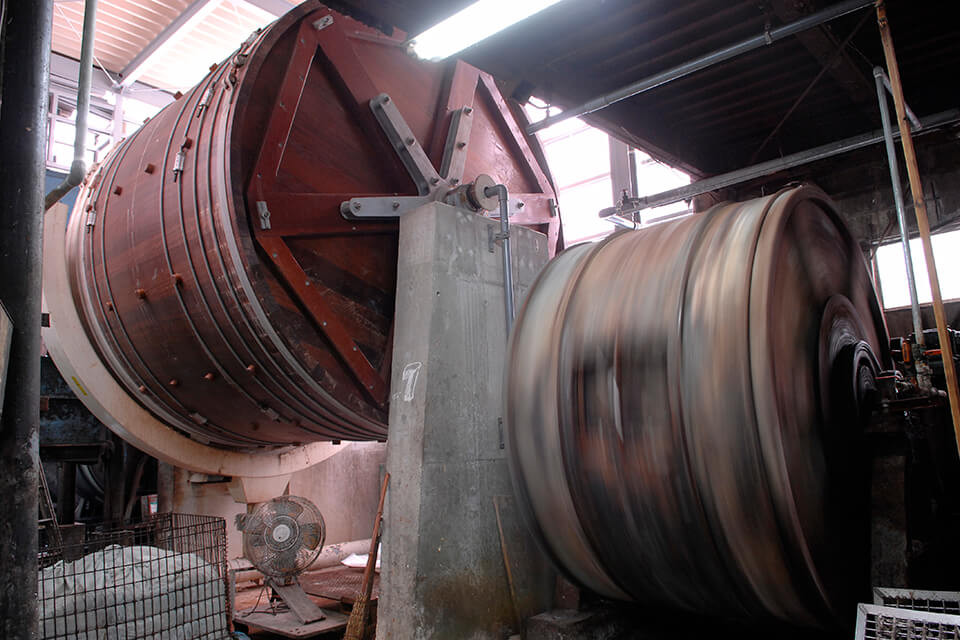
A factory founded in 1933. The history of pigskin manufacturing is engraved on the shiny black drum. The large drum on the left is imported from Italy.
Sumida Ward in Tokyo has made pigskin manufacturing a local industry. Even now, about 80% of the domestic production of pigskin is concentrated in this area. However, the number of factories, which used to exceed 100 in the early Showa period, has now decreased to just a few. We visited one of such rarities, Fukushima Chemical Industry.
The skin (raw leather), which is the raw material for pigskin, still has hair and fat on it when it is first brought to the factory. Moreover, since it is salted so that it does not rot, the work process starts by removing all of that. Hundreds of raw skins are put into a wooden drum called a "taiko", which is taller than a person, and with water and several chemicals, the hair, excess fat and salt is melted off, and this process is repeated until the thickness of the skin is consistent.
Then, the chemicals are changed again, this time for the "tanning" process. Tanning is important in preventing the skin from rotting and making it durable.
It can be said that it is the step to process "skin" into "leather". The work up to this point takes a few days, but it takes even a couple of more days to complete the pigskin through steps such as shaving, dyeing, embossing, drying, and painting.
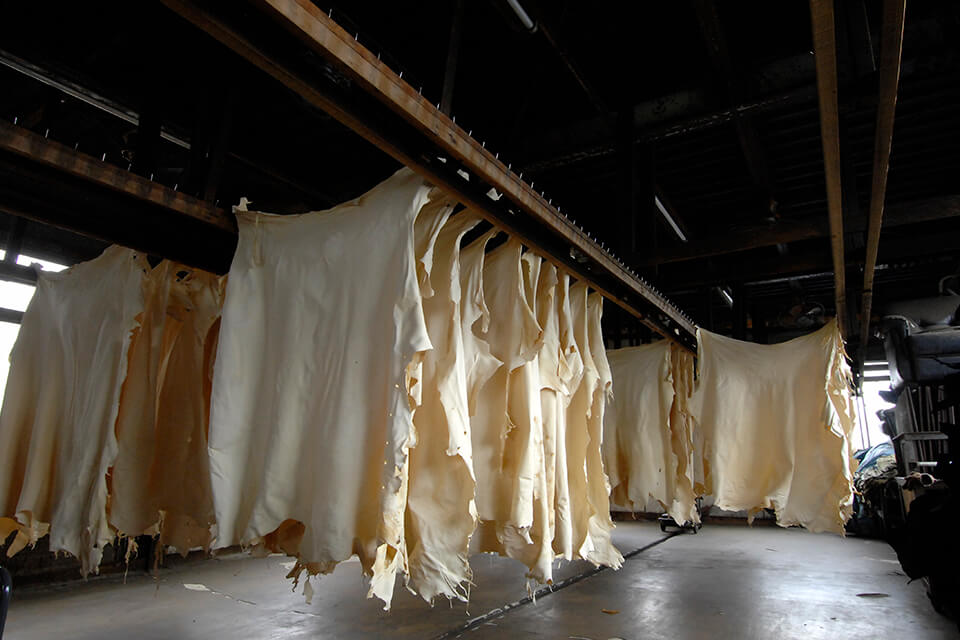
After dyeing and wringing out the water, the leather is dried in a heated room for about half a day to dry completely.
Each process is supported by the experience and intuition of the craftsmen. For example, the temperature of the water to be put into the drum and the amount of chemicals need to be fine-tuned depending on the season and the weather, and in the shaving process to adjust the thickness, it all boils down to the craftsman's hands, eyes and years of experience.
In addition to relying on skilled craftsmanship, Fukushima Chemical Industry is also active in researching new methods. In June 2007, they switched from conventional chrome tanning to tannin tanning. Vegetable tanned leather is rich in toughness and malleability, but has a hard texture and has been difficult to dye in light colors. Fukushima Chemical Industry has overcome these issues and succeeded in producing highly white tanned leather through their various R&D efforts. Furthermore, it succeeded in applying the technique to printed leather, and was able to create a signature product. By shifting to tannin, the leftover shavings were not simply turned into waste, but could be used as fertilizer or feed, making it an "environmentally friendly leather". The recycling method is still under development, but the future as an eco-leather is bright .
Currently, they have incorporated wastewater treatment equipment that meets the standard values of regulations in Tokyo. They offer chrome tanning, tannin tanning, chrome-free tanning, etc. depending on the needs of the customer.
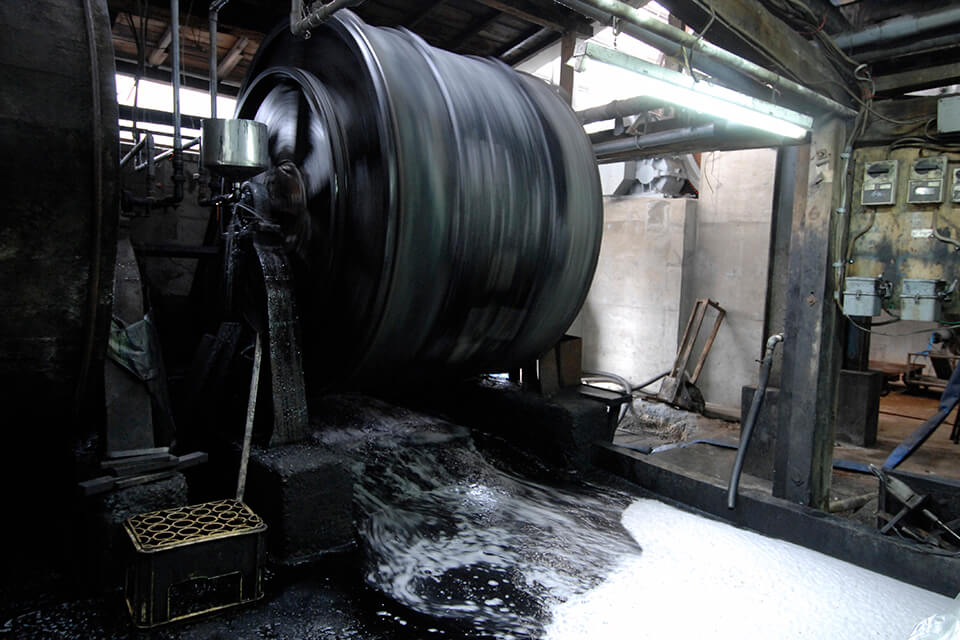
A drum that washes black-dyed leather with water.

Stacked raw skin. It arrives at the factory in a salted state to prevent spoilage.
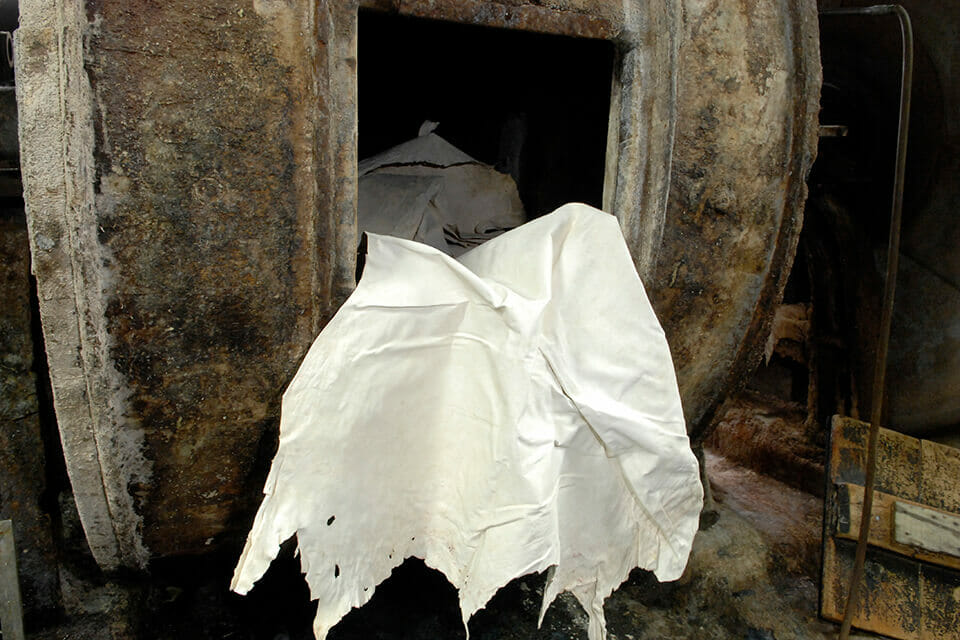
Leather immediately after tanning. Hair and fat attached to the raw skin are removed, and iis transformed into durable leather.
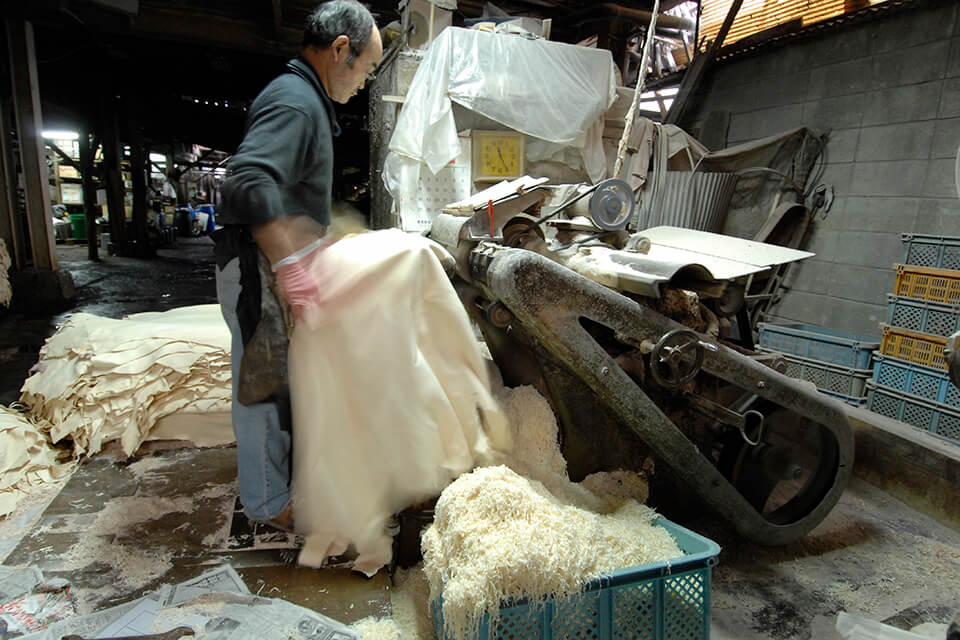
Process to stretch the tanned skin to a certain thickness in units of 0.1 mm.

Leather that has just been dyed orange.
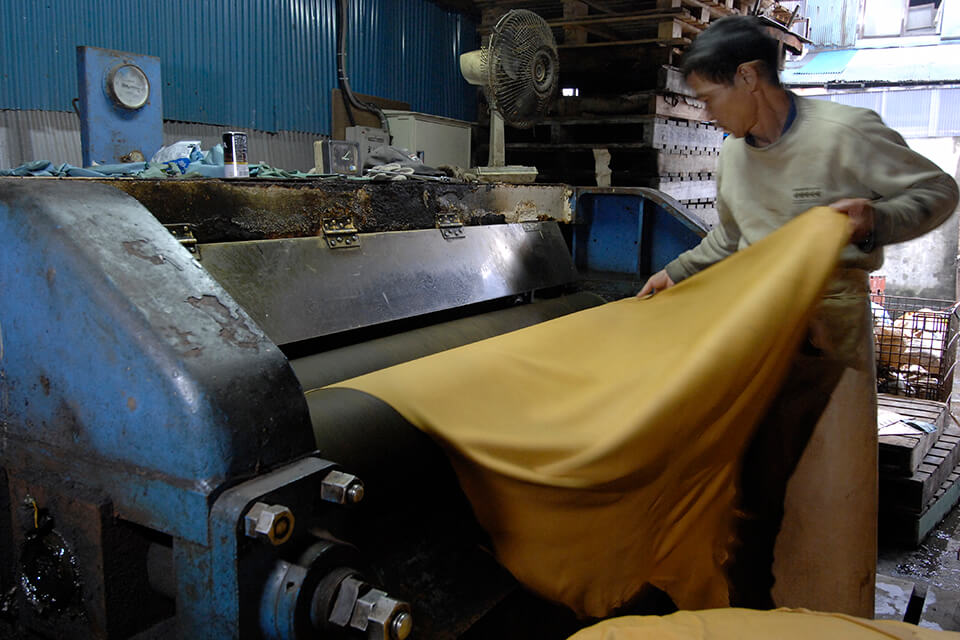
When the dyed leather is passed through a water squeezing machine, it instantly becomes taut and looks like the leather we are used to seeing. This takes skills to not wrinkle the leather.
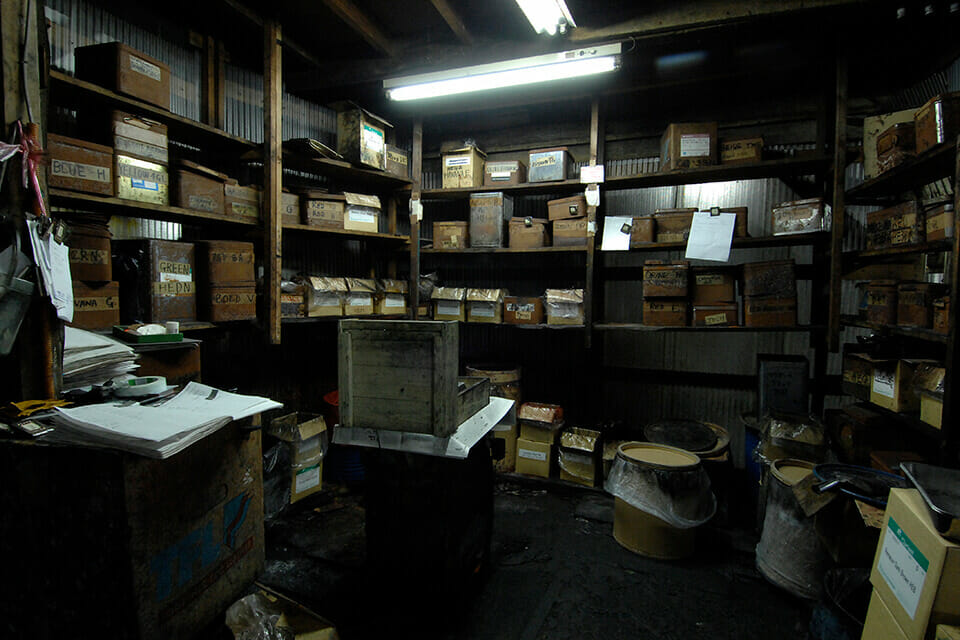
A shelf with an array of cans containing dye. The colors are combined according to the order, and the ratio is recorded in the notebook on the left.